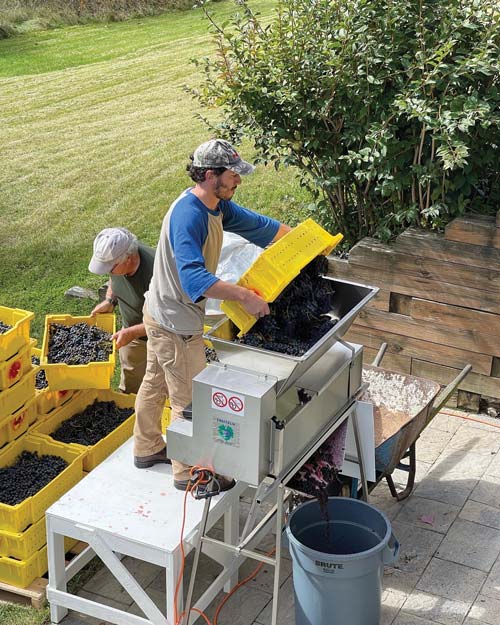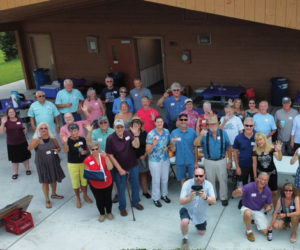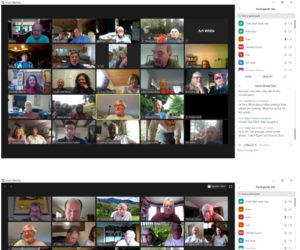Helping a friend harvest

I met Brian Ford from High Rows Vineyards at a 4th of July party in 2021. We hit it off talking about the intimate community of Vermont’s commercial winemakers and grape growers. In 2008, he and his father, Bill, had joined that network when they carved out a few acres of forest to plant their Ripton, Vermont, vineyards where they now grow the red varieties Marquette and St. Croix, and whites including La Crescent, St. Pepin, Brianna, Osceola Muscat, and Prairie Star. For over a year since meeting Brian I had intentions of making the hour and a half drive north to visit the vineyard and try their wines. Last year I finally decided to make it happen and to earn my samples with some sweat equity by volunteering for harvest.
After putting myself on the volunteer roster, I awaited confirmation from Brian about when the grapes would be ready. Late in September he reached out and said to come up the morning of October 1st. Upon arrival I was given a quick tour of the well-manicured vineyards, then helped Bill unclip and remove the last of the bird netting before gathering with a handful of other volunteer pickers to get our harvest instructions. We were each given a pair of harvesting shears and a bright yellow lug for the grapes we picked. This was a small but experienced group, many of whom had helped harvest at High Rows for several years. Each pair of pickers worked on opposite sides of a row slowly filling their lugs with the gorgeous fruit destined to become High Rows Vineyard’s next vintage.
The St. Croix grapes we were picking were mostly perfect, but the sweetness within attracted a myriad of bees and hornets. In addition to the bees and hornets burrowing into some of the grapes, many birds had enjoyed this year’s vineyard bounty — despite the extensive bird netting. Brian estimated that he lost nearly 25% of some varieties to birds and other critters (like raccoons). Bird and animal losses are a frustration to grape growers everywhere and this was a reminder to me of the often challenging agricultural roots of wine. Regardless of whether you’re making wine from kits, juices, or fresh fruit, someone somewhere took great care to successfully farm those grapes.
Our small but efficient harvest crew kept a good pace despite continually chatting and laughing across the rows.
Our small but efficient harvest crew kept a good pace despite continually chatting and laughing across the rows. After completing my assigned lot of St. Croix, I finished my day on a row of La Crescent. The crew took one last turn around the vineyard to make sure we’d picked all of the clusters. Finally, feeling accomplished at the vision of all of our full lugs stacked at the end of each row, we retired to a semi-circle of Adirondack chairs near a small tent where Brian’s mother, Carol, had a crockpot of bacon cheddar soup ready for our lunch. We sampled past vintages of High Rows’ Mountain Red and Goshen White field blends and savored the last bottles of a couple of limited creations.
As the harvest volunteers began to disperse, I saw Brian driving the tractor over to collect the lugs to bring them to the crushpad. I stayed on to watch him and his dad crush and destem the reds and to lend a hand moving the drums of fresh must into the cellar to dump into the rectangular open-top fermenters. After a full day of rewarding work, I said my farewells to Brian and family. He walked me to my car and said, “Now onto the Goshen vineyard.” It was already mid-afternoon, but he had another crew all lined up and picking down the road at the second of their three source vineyards . . . a wine grower’s work is never done.




